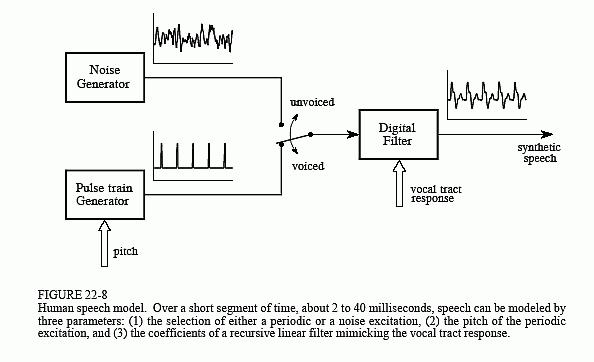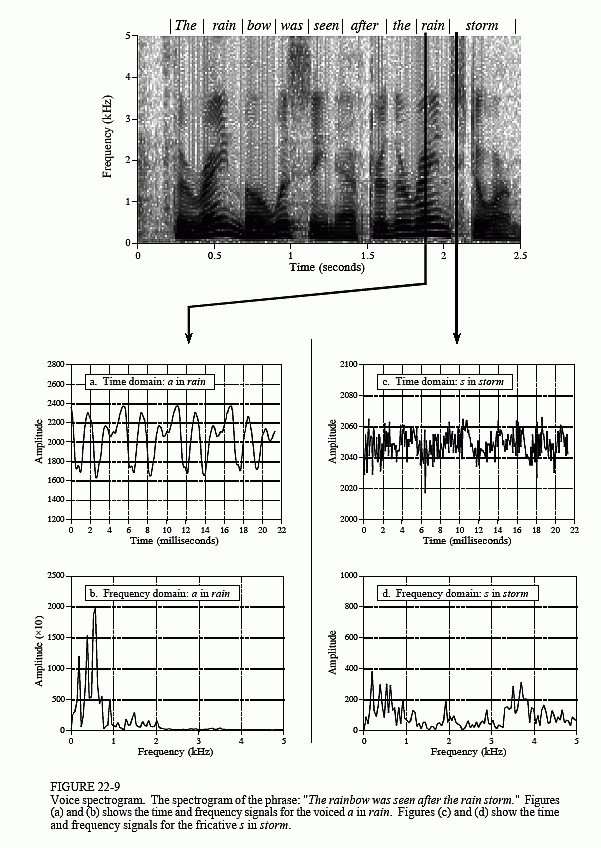The Scientist and Engineer's Guide to
Digital Signal Processing
By Steven W. Smith, Ph.D.
Book Search
Table of contents
- 1: The Breadth and Depth of DSP
- 2: Statistics, Probability and Noise
- 3: ADC and DAC
- 4: DSP Software
- 5: Linear Systems
- 6: Convolution
- 7: Properties of Convolution
- 8: The Discrete Fourier Transform
- 9: Applications of the DFT
- 10: Fourier Transform Properties
- 11: Fourier Transform Pairs
- 12: The Fast Fourier Transform
- 13: Continuous Signal Processing
- 14: Introduction to Digital Filters
- 15: Moving Average Filters
- 16: Windowed-Sinc Filters
- 17: Custom Filters
- 18: FFT Convolution
- 19: Recursive Filters
- 20: Chebyshev Filters
- 21: Filter Comparison
- 22: Audio Processing
- 23: Image Formation & Display
- 24: Linear Image Processing
- 25: Special Imaging Techniques
- 26: Neural Networks (and more!)
- 27: Data Compression
- 28: Digital Signal Processors
- 29: Getting Started with DSPs
- 30: Complex Numbers
- 31: The Complex Fourier Transform
- 32: The Laplace Transform
- 33: The z-Transform
- 34: Explaining Benford's Law
How to order your own hardcover copy
Wouldn't you rather have a bound book instead of 640 loose pages?Your laser printer will thank you!
Order from Amazon.com.
Chapter 22: Audio Processing
Computer generation and recognition of speech are formidable problems; many approaches have been tried, with only mild success. This is an active area of DSP research, and will undoubtedly remain so for many years to come. You will be very disappointed if you are expecting this section to describe how to build speech synthesis and recognition circuits. Only a brief introduction to the typical approaches can be presented here. Before starting, it should be pointed out that most commercial products that produce human sounding speech do not synthesize it, but merely play back a digitally recorded segment from a human speaker. This approach has great sound quality, but it is limited to the prerecorded words and phrases.
Nearly all techniques for speech synthesis and recognition are based on the model of human speech production shown in Fig. 22-8. Most human speech sounds can be classified as either voiced or fricative. Voiced sounds occur when air is forced from the lungs, through the vocal cords, and out of the mouth and/or nose. The vocal cords are two thin flaps of tissue

stretched across the air flow, just behind the Adam's apple. In response to varying muscle tension, the vocal cords vibrate at frequencies between 50 and 1000 Hz, resulting in periodic puffs of air being injected into the throat. Vowels are an example of voiced sounds. In Fig. 22-8, voiced sounds are represented by the pulse train generator, with the pitch (i.e., the fundamental frequency of the waveform) being an adjustable parameter.
In comparison, fricative sounds originate as random noise, not from vibration of the vocal cords. This occurs when the air flow is nearly blocked by the tongue, lips, and/or teeth, resulting in air turbulence near the constriction. Fricative sounds include: s, f, sh, z, v, and th. In the model of Fig. 22-8, fricatives are represented by a noise generator.
Both these sound sources are modified by the acoustic cavities formed from the tongue, lips, mouth, throat, and nasal passages. Since sound propagation through these structures is a linear process, it can be represented as a linear filter with an appropriately chosen impulse response. In most cases, a recursive filter is used in the model, with the recursion coefficients specifying the filter's characteristics. Because the acoustic cavities have dimensions of several centimeters, the frequency response is primarily a series of resonances in the kilohertz range. In the jargon of audio processing, these resonance peaks are called the format frequencies. By changing the relative position of the tongue and lips, the format frequencies can be changed in both frequency and amplitude.
Figure 22-9 shows a common way to display speech signals, the voice spectrogram, or voiceprint. The audio signal is broken into short segments, say 2 to 40 milliseconds, and the FFT used to find the frequency spectrum of each segment. These spectra are placed side-by-side, and converted into a grayscale image (low amplitude becomes light, and high amplitude becomes dark). This provides a graphical way of observing how the frequency content of speech changes with time. The segment length is chosen as a tradeoff between frequency resolution (favored by longer segments) and time resolution (favored by shorter segments).
As demonstrated by the a in rain, voiced sounds have a periodic time domain waveform, shown in (a), and a frequency spectrum that is a series of regularly spaced harmonics, shown in (b). In comparison, the s in storm, shows that fricatives have a noisy time domain signal, as in (c), and a noisy spectrum, displayed in (d). These spectra also show the shaping by the format frequencies for both sounds. Also notice that the time-frequency display of the word rain looks similar both times it is spoken.
Over a short period, say 25 milliseconds, a speech signal can be approximated by specifying three parameters: (1) the selection of either a periodic or random noise excitation, (2) the frequency of the periodic wave (if used), and (3) the coefficients of the digital filter used to mimic the vocal tract response. Continuous speech can then be synthesized by continually updating these three parameters about 40 times a second. This approach was responsible for one the early commercial successes of DSP: the Speak & Spell, a widely marketed electronic learning aid for children. The sound quality of this type of speech synthesis is poor, sounding very mechanical and not quite human. However, it requires a very low data rate, typically only a few kbits/sec.
This is also the basis for the linear predictive coding (LPC) method of speech compression. Digitally recorded human speech is broken into short segments, and each is characterized according to the three parameters of the model. This typically requires about a dozen bytes per segment, or 2 to 6 kbytes/sec. The segment information is transmitted or stored as needed, and then reconstructed with the speech synthesizer.
Speech recognition algorithms take this a step further by trying to recognize patterns in the extracted parameters. This typically involves comparing the segment information with templates of previously stored sounds, in an attempt to identify the spoken words. The problem is, this method does not work very well. It is useful for some applications, but is far below the capabilities of human listeners. To understand why speech recognition is so difficult for computers, imagine someone unexpectedly speaking the following sentence:
Of course, you will not understand the meaning of this sentence, because it has none. More important, you will probably not even understand all of the individual words that were spoken. This is basic to the way that humans

perceive and understand speech. Words are recognized by their sounds, but also by the context of the sentence, and the expectations of the listener. For example, imagine hearing the two sentences:
Even if exactly the same sounds were produced to convey the underlined words, listeners hear the correct words for the context. From your accumulated knowledge about the world, you know that children don't wear secret agents, and people don't become spooky jewelry during wartime. This usually isn't a conscious act, but an inherent part of human hearing.
Most speech recognition algorithms rely only on the sound of the individual words, and not on their context. They attempt to recognize words, but not to understand speech. This places them at a tremendous disadvantage compared to human listeners. Three annoyances are common in speech recognition systems: (1) The recognized speech must have distinct pauses between the words. This eliminates the need for the algorithm to deal with phrases that sound alike, but are composed of different words (i.e., spider ring and spy during). This is slow and awkward for people accustomed to speaking in an overlapping flow. (2) The vocabulary is often limited to only a few hundred words. This means that the algorithm only has to search a limited set to find the best match. As the vocabulary is made larger, the recognition time and error rate both increase. (3) The algorithm must be trained on each speaker. This requires each person using the system to speak each word to be recognized, often needing to be repeated five to ten times. This personalized database greatly increases the accuracy of the word recognition, but it is inconvenient and time consuming.
The prize for developing a successful speech recognition technology is enormous. Speech is the quickest and most efficient way for humans to communicate. Speech recognition has the potential of replacing writing, typing, keyboard entry, and the electronic control provided by switches and knobs. It just needs to work a little better to become accepted by the commercial marketplace. Progress in speech recognition will likely come from the areas of artificial intelligence and neural networks as much as through DSP itself. Don't think of this as a technical difficulty; think of it as a technical opportunity.
